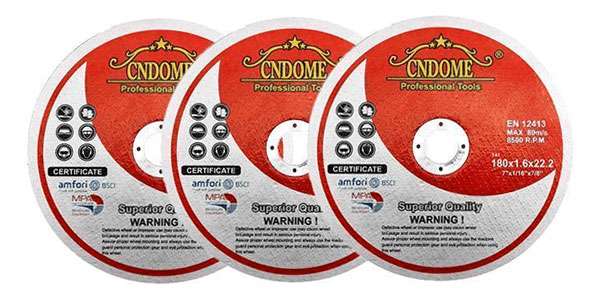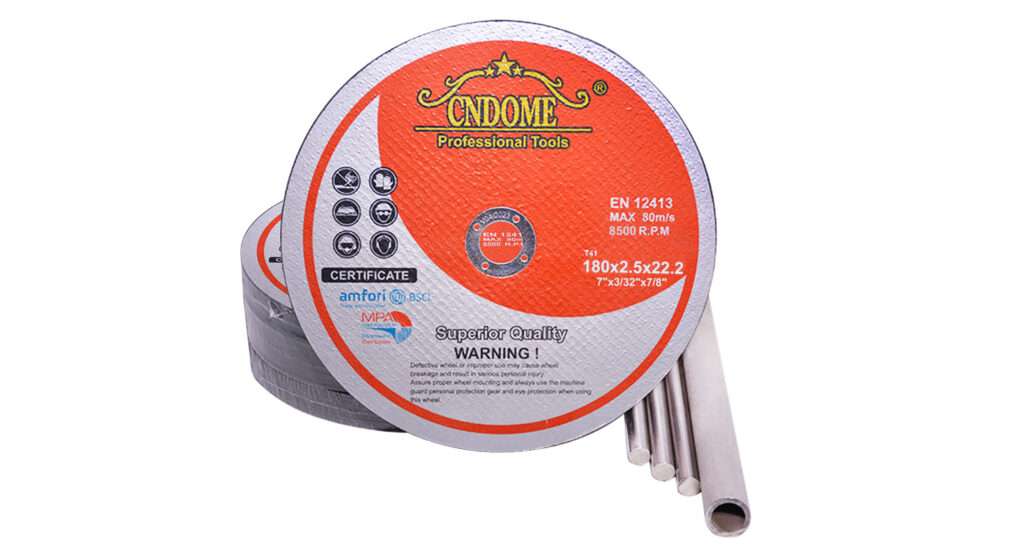When it comes to selecting the right cutting disc for your project, one of the critical factors to consider is the thickness of the disc. The 180mm (7-inch) cutting disc is a popular size for various cutting applications, particularly in metalworking, construction, and fabrication. This guide will help you understand the different thicknesses available of 180mm cutting discs and how to choose the best one for your needs.
Understanding Cutting Disc Thickness
The thickness of a cutting disc affects its performance, durability, and the type of materials it can cut effectively. Generally, cutting discs range from ultra-thin to thick, each serving different purposes:
1. Ultra-Thin Discs (1.0mm – 1.6mm)
- Applications: Ideal for cutting thin metal sheets, stainless steel, and precise cutting tasks where minimal material removal and a clean cut are required.
- Advantages: These discs provide fast, clean cuts with minimal burr formation. They also reduce heat generation and material waste.
- Disadvantages: Due to their thinness, they wear out faster and are more prone to breakage under high stress or improper handling.
2. Standard Thin Discs (1.6mm – 2.5mm)
- Applications: Suitable for cutting a wide range of metals, including steel, stainless steel, and non-ferrous metals. They offer a balance between cutting speed and durability.
- Advantages: These discs provide a good combination of speed, precision, and longevity. They are versatile and can handle a variety of cutting tasks efficiently.
- Disadvantages: While they are more durable than ultra-thin discs, they still require careful handling to prevent breakage.
3. Medium Thickness Discs (2.5mm – 3.5mm)
- Applications: Designed for cutting thicker metal sections, pipes, and profiles. They are also used for cutting construction materials like bricks and concrete.
- Advantages: Medium thickness discs offer improved durability and longer lifespan. They can withstand more rigorous cutting tasks and provide a good balance between speed and durability.
- Disadvantages: These discs generate more heat and produce a wider cut, which might not be suitable for precision cutting tasks.
4. Thick Discs (3.5mm and above)
- Applications: Best for heavy-duty cutting tasks involving thick metals, cast iron, and large diameter pipes. They are also suitable for general-purpose cutting in construction and demolition work.
- Advantages: Thick discs are highly durable and can handle high-stress cutting operations. They provide longer life and are less prone to breakage.
- Disadvantages: These discs are slower in cutting speed and produce more heat and a wider kerf, which can result in more material waste and less precision.
Choosing the Right Thickness
Selecting the appropriate thickness for your 180mm cutting disc depends on the specific requirements of your project. Here are some factors to consider:
- Material Type: Identify the type of material you will be cutting. Thinner discs are better for thin materials and precision work, while thicker discs are suited for heavy-duty tasks and thicker materials.
- Cutting Speed and Precision: If you need fast and precise cuts with minimal burr formation, opt for ultra-thin or standard thin discs. For less precision and more durability, go with medium to thick discs.
- Disc Longevity: Consider the expected lifespan of the disc. Thicker discs generally last longer but may cut slower. Choose a thickness that balances longevity and cutting speed for your specific application.
- Tool Compatibility: Ensure that the disc thickness is compatible with your cutting tool. Some tools may have limitations on the thickness they can accommodate safely.
Conclusion
The thicknesses of 180mm cutting discs plays a crucial role in determining its performance and suitability for different cutting tasks. Whether you need ultra-thin discs for precise, fast cuts or thicker discs for heavy-duty applications, understanding the pros and cons of each thickness will help you make an informed decision. Always consider the material, required precision, disc longevity, and tool compatibility when selecting your cutting disc to achieve the best results for your project.



